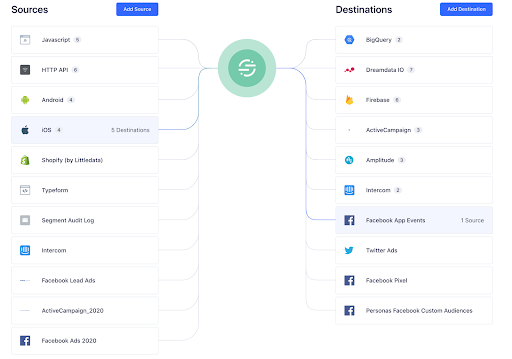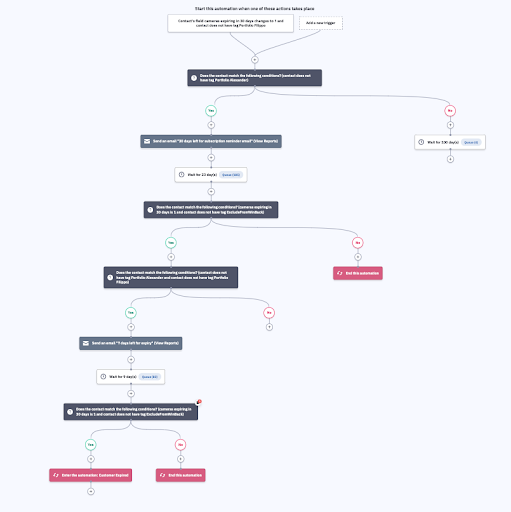Time to read: 5 minutes
Results
45%
increase in customer engagement (open rates / click throughs)
15%
increase in customer retention
The big win
Veo Technologies needed to gain a better understanding of its customers to deliver more relevant communications and evolve its product in-line with customer needs and preferences.
Veo Technologies turned to Twilio Segment to track user behavior and connect data across its platforms, enabling it to deliver personalized experiences and optimize its product.
Veo is the ultimate camera for team sports, allowing sports clubs to simply, affordably and easily record and live-stream matches. Built using AI and machine learning, Veo can record matches without a camera operator, by tracking the actions on the pitch, and can then provide a level of extensive in-depth analysis that was previously out of reach for the vast majority of sports clubs.
Since launching in 2015, the company has achieved rapid year-on-year growth. Already, Veo cameras have been used to record more than 750,000 matches, by more than 12,000 clubs, in 80 countries around the world.
As Veo continued its rapid growth, it was challenging to understand user behavior on its product platform meaning teams had very little customer data to inform product development and marketing campaigns.
Veo turned to Twilio Segment to understand user behavior on its apps and website, and integrate all customer data into a single repository.
Twilio Segment is enabling us to continually improve our products and to communicate more effectively with customers. But more than this, Twilio Segment is generating business value, as we’re now in a far better position to retain customers and upsell new products and services based on their behaviors and interests.
-Bjarke Wheatley Enkelund, Data analyst, Veo Technologies
Understanding user behavior and developing a deeper understanding of customers
Veo was struggling to deliver more personalized experiences for customers because the team simply didn’t have enough insight into customer needs and preferences. It was challenging to understand user behavior across its product platforms – iOS app, Android app and web app. Even on its website, Veo’s ability to track event data was very limited.
Marketing teams weren’t able to use trusted customer data to inform their campaigns and product teams had no insight into how customers were using the product. For example, Veo had no insight into how many users were watching particular videos, or which customers were logging in to watch content and engaging with live streams or recordings.
Veo needed to implement a data platform to understand user behavior, and centralize and standardize data from multiple sources, to provide a single source of truth for all customer data. This was particularly important given the company’s rapid growth and the evolution of its tech stack which was becoming increasingly sophisticated and complex.
The company explored several tools to connect data across systems. A proof of concept project demonstrated Twilio Segment’s ability to collect data from Veo’s product platform and to use this data to create Personas which could be deployed across downstream marketing tools.
In addition, Martin Andersen, Veo’s Head of Cloud Engineering, had extremely positive experiences of using Twilio Segment in a previous role. Martin knew that Twilio Segment could provide the scalable platform Veo needed to activate its customer data and optimize its marketing and product development programs.
Collecting and unifying customer data, and building Personas
Veo brought in Twilio Segment to integrate all data sources into a single Customer Data Platform (CDP) and to track all event and behavioral data across its channels.
Twilio Segment Connections enables Veo to collect, unify and connect all of its customer data, and Functions allows teams to integrate new downstream tools quickly and easily. Veo also uses Personas to create audiences for more personalized outbound communications.

Twilio Segment is primarily used by marketing teams to create and execute personalized campaigns, and by product teams to understand usage trends and inform product development strategy.
And as the critical connector of systems and data across the organization, Twilio Segment is now also being exposed to the wider business. For instance, data is increasingly being used by customer success teams to better understand each individual customer and deliver a more tailored and relevant experience.

Enhancing personalization and driving business growth
By implementing Twilio Segment, Veo has been able to generate a much richer understanding of its customers. Importantly, the company is not only generating useful, real-time insights into the individual buyers of its cameras, but also the wider stakeholders within a sports club that are involved with using the cameras – for instance, team players, coaches, chairpersons and parents. This is vital since a Veo camera can be used by up to 50 people within a sports club.
With Twilio Segment, we can get visibility into the complete environment in which our cameras are being used. We can see how and when cameras are being used, and also when people within the club are accessing the recordings. Ultimately, we’re working towards gaining a complete picture of how people within a club are connected. And this will be game changing in terms of how we communicate and engage different stakeholders in a relevant and timely manner.
- Rasmus Nilsson, Paid Marketing Manager, Veo Technologies
Having this level of visibility into customer usage and behavior is enabling Veo to take a more sophisticated approach with its customer communications. For instance, marketing teams are able to use customer data to identify customers that are most likely to be ready to buy an additional camera for their clubs. They can spot where sports clubs are nearing their capacity to record all of the matches they want to on their current camera and this now triggers an automated email to these customers, with specific offers to purchase an additional camera. This is expected to lead to a marked improvement in upsell.
Marketing teams can also use Twilio Segment data to exclude customers from non-relevant communications. For instance, they can remove customers that are awaiting delivery on a recent order from emails offering discounts on buying a new product. This ability to ensure communications remain relevant is having a positive impact on overall customer experience.
Having access to trusted customer data is also providing benefits when it comes to subscription renewals. Customer success teams can easily identify where a customer subscription is about to expire and set up an email flow within Active Campaign to remind them to renew before the termination date. What was once a slow, manual process is now fully automated, saving customer success teams hundreds of hours every month and reducing customer churn by 12%.
Twilio Segment data is also being used to guide product development. Veo can now pinpoint which features are most popular with customers and also where functionality could be improved to optimize engagement and experience. Product teams can also diagnose problems more easily and perform fixes before they impact customer experience.
What’s next? Veo is planning to ramp up its use of Personas to create even more personalized experiences for customers. The company is also exploring how Twilio Segment can be deployed more widely across its customer support function to provide more tailored support to customers.
Interested in hearing more about how Segment can help you?
Connect with the team to learn how 25,000+ companies use Segment's extensible, scalable platform to turn customer data into revenue-generating experiences.
Thank you, you’re all set!
We'll get back to you shortly. For now, you can create your workspace by clicking below.